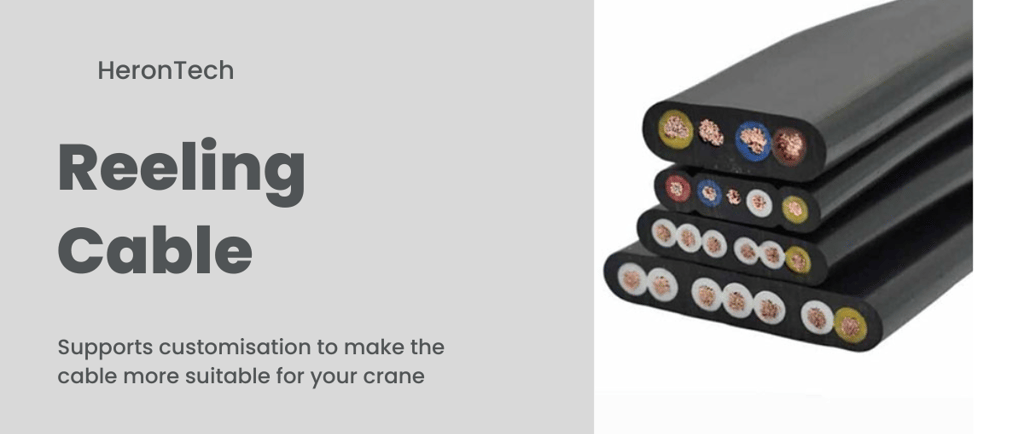Comparing Reeling Cables for Different Industrial Settings
When it comes to industrial environments, choosing the right reeling cable can be crucial for ensuring operational efficiency and safety. Reeling cables are designed to manage the movement of electrical connections in dynamic settings, where flexibility and durability are paramount. This blog post delves into various types of reeling cables and how they fare in different industrial settings. Understanding these differences can help you make an informed decision for your specific application.
9/2/20243 min read


What is a Reeling Cable?
Reeling cables are specialized cables designed to withstand repetitive winding and unwinding. They are essential in environments where cables need to move with equipment, such as in cranes, hoists, and conveyor systems. Unlike standard cables, reeling cables are engineered with a robust construction to handle the stress of constant movement and to ensure longevity and reliability.
Key Types of Reeling Cables
Flexible Reeling Cables
Flexible reeling cables are ideal for applications that require frequent movement and bending. These cables are designed with multiple strands of copper or aluminum wires, which allow for high flexibility and resistance to fatigue. They are commonly used in manufacturing plants, automated machinery, and entertainment industries.
Best For: Machinery with frequent motion, such as automated assembly lines and stage equipment.
Heavy-Duty Reeling Cables
Heavy-duty reeling cables are built to endure harsh environments and heavy mechanical stress. They feature a thicker insulation and robust construction to resist abrasion, chemicals, and extreme temperatures. These cables are typically used in industries such as mining, construction, and heavy manufacturing.
Best For: Mining equipment, construction machinery, and industrial robots.
Thermoplastic Reeling Cables
Thermoplastic reeling cables offer a high degree of flexibility and resistance to environmental factors. The thermoplastic insulation and jacket provide protection against oils, chemicals, and UV radiation. These cables are suitable for applications where exposure to harsh conditions is a concern.
Best For: Outdoor settings, chemical processing, and food manufacturing.
Shielded Reeling Cables
Shielded reeling cables are designed to protect against electromagnetic interference (EMI) and radio frequency interference (RFI). The shielding provides an additional layer of protection, making these cables ideal for applications involving sensitive electronic equipment or data transmission.
Best For: Data centers, medical equipment, and telecommunications.
Factors to Consider When Choosing Reeling Cables
Environment
The environment where the cable will be used is a critical factor. For instance, cables used in outdoor environments need to withstand UV exposure and moisture, while those used in chemical environments must resist corrosion and chemical damage.
Movement Requirements
Consider the frequency and extent of movement the cable will undergo. For applications with high degrees of movement, flexible or heavy-duty cables may be necessary to avoid premature wear and tear.
Temperature Range
The operating temperature range of the reeling cable should match the environmental conditions of your industrial setting. Extreme temperatures can affect the performance and longevity of the cable.
Electrical Load
Ensure that the cable's specifications align with the electrical load requirements of your equipment. Cables that are not rated for the correct load can lead to overheating and potential failure.
Durability
Assess the expected lifespan of the cable based on the mechanical and environmental stresses it will face. High durability is essential for reducing maintenance costs and minimizing downtime.
Applications Across Industries
Manufacturing: In manufacturing, flexible reeling cables are often used with automated machinery and robotic systems. These cables provide the necessary flexibility to accommodate the movement of equipment while ensuring consistent power and signal transmission.
Construction: Heavy-duty reeling cables are vital in construction sites where cables are exposed to harsh conditions and physical stress. These cables ensure reliable operation of cranes and other construction machinery.
Entertainment: The entertainment industry uses flexible and shielded reeling cables to support stage equipment and lighting systems. These cables need to handle constant movement and resist interference to maintain high-quality performance.
Mining: Mining operations rely on heavy-duty reeling cables to endure the severe conditions of underground environments. These cables must resist abrasion and provide reliable power to mining equipment.
Conclusion
Choosing the right reeling cable is essential for optimizing performance and safety in various industrial settings. By understanding the different types of reeling cables and their applications, you can make an informed decision that best suits your operational needs. Whether you require flexibility, durability, or protection from interference, there is a reeling cable designed to meet your specific requirements. Investing in the right cable will not only enhance the efficiency of your equipment but also contribute to long-term operational success.
For more information on selecting the ideal reeling cable for your industry, or to explore our range of high-quality cables, contact us today. Our team of experts is here to help you find the perfect solution for your needs.
